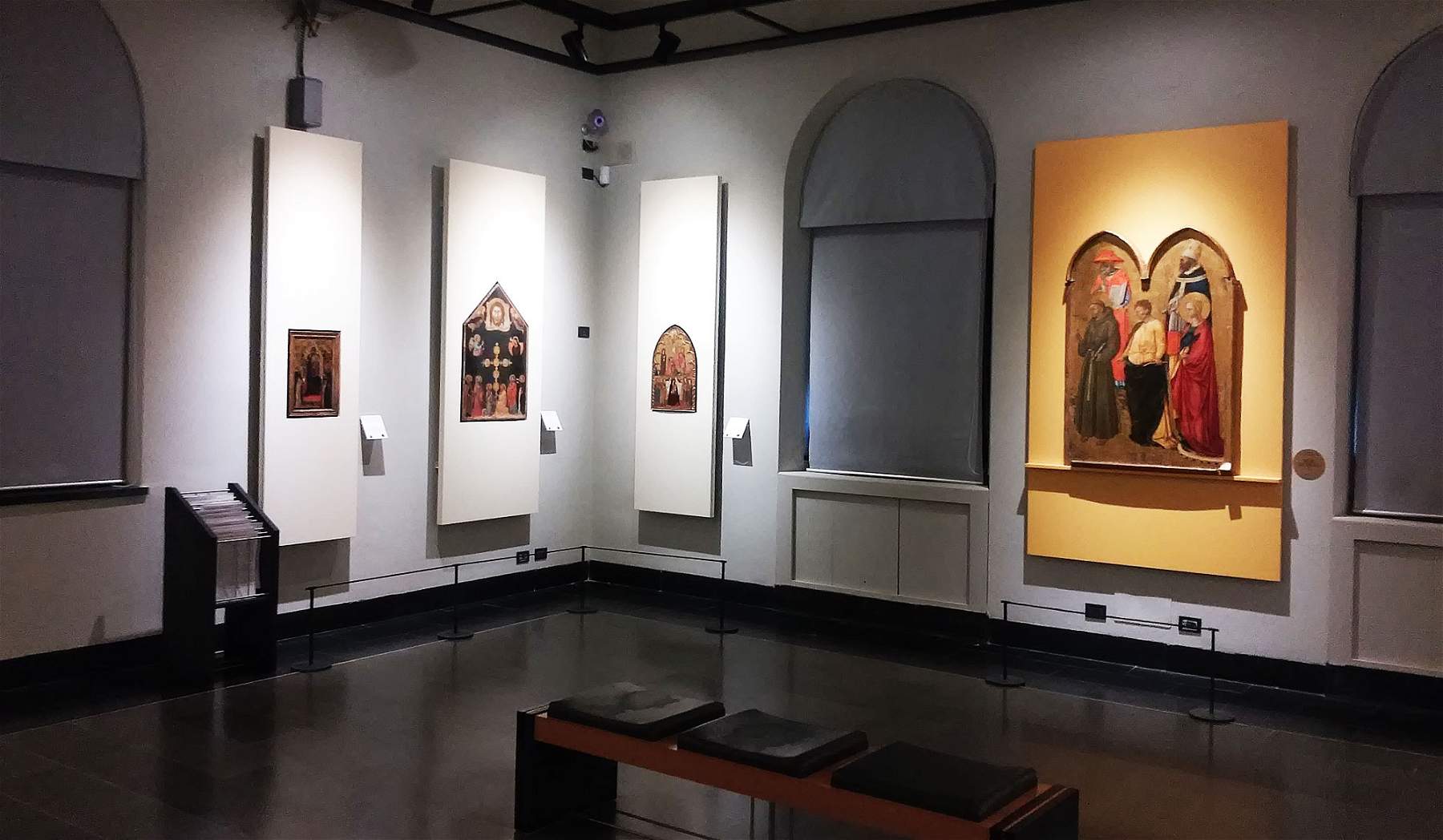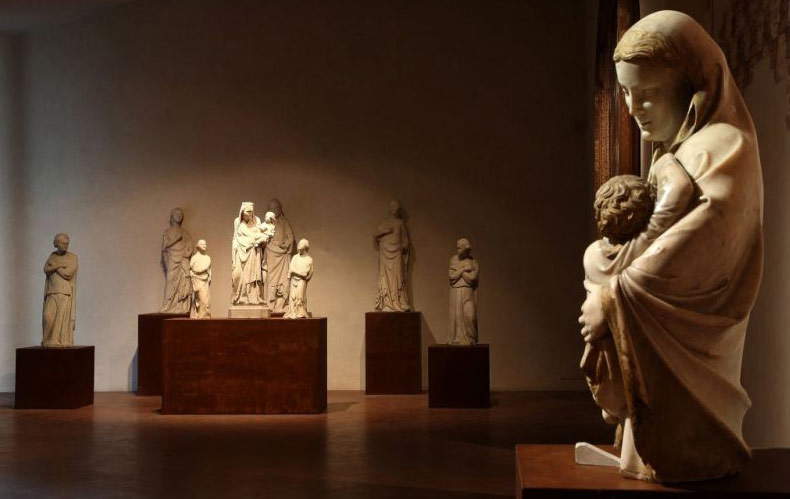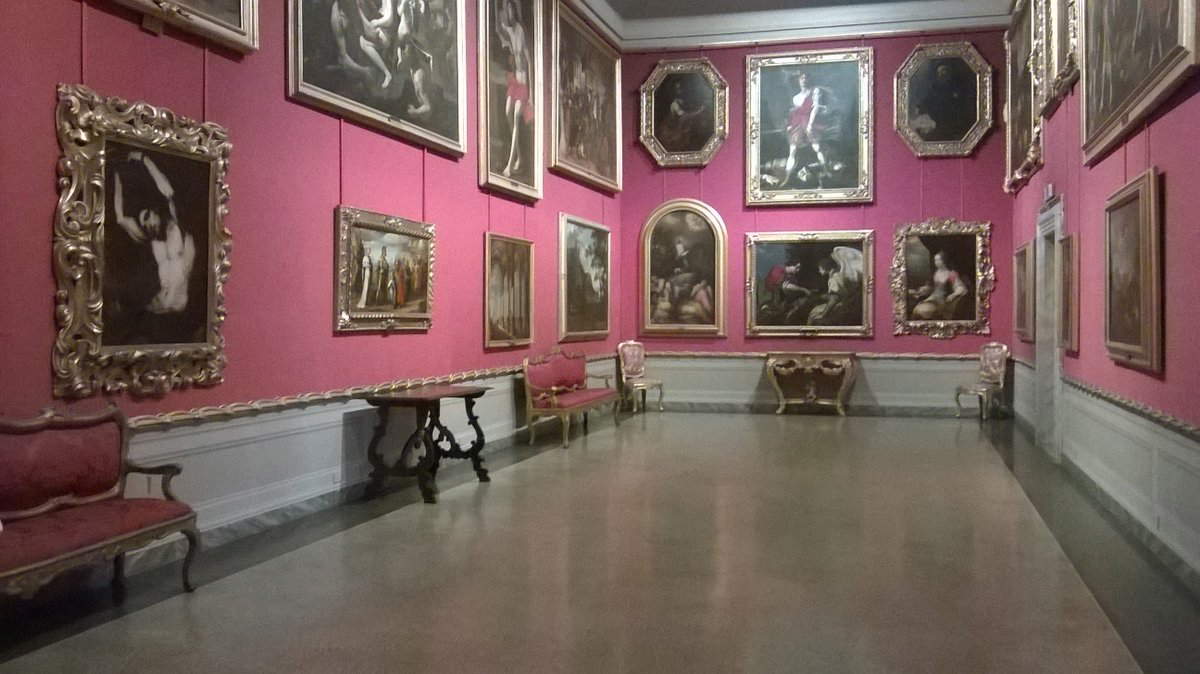Circulate masterpieces from “major museums” by lending them to “smaller museums” and launch “quality contemporary art” initiatives in smaller, decentralized venues. This is what Pierluigi Panza proposed last May 1 in the columns of the Florentine Corriere, in order to revive the smaller museums when we will be able to walk through their halls again: the thesis is that, because of the medical-health prescriptions that will force “social distancing” (I prefer to call it physical distancing) with consequent contingent visits to the larger museums, tourists will be forced not to visit them, and the problem will therefore arise of how to “divert” them to the lesser-known institutions so as not to lose them. If the proposal to initiate quality contemporary art programs seems sensible (but not so simple, because the contemporary artist is but a cog in a chain that includes curators, critics, gallery owners, events and whatnot: often, on the other hand, in peripheral locations there is continuous improvisation, and one hopes that therefore the post-virus will also bring more professionalism and smarter choices), on the displacement of masterpieces from major museums one must, at the very least, ask oneself questions to understand if it can work, and to understand if the name of the artist is in itself enough to move legions of happy tourists.
Usually the opposite happens: that is, there have been more frequent occasions when a work has attracted interest when moved from a minor center to a major attraction, and not vice versa. An example that Panza, as a Lombard, will be well acquainted with is that offered by the Christmas displays of the City of Milan, when every year a work leaves a provincial museum to arrive at Palazzo Marino. Filippino Lippi’s roundels of theAnnunciation, for example, make little impression if they are seen in their home, the precious Museo Civico of San Gimignano, while they elicit choruses of emotional ovations if exhibited with all the liturgies of the case (the jubilation of festive articles in local and national newspapers anticipating the event; the marketing that insists on the uniqueness of the exhibition, which inexorably becomes “an appointment not to be missed.” the rhetoric of the possibility of seeing a masterpiece by an ancient artist for free and that weaves the unfailing phrasing set to the cliché of the “Christmas gift” offered to the citizenry; the “long lines at the entrance” on which the local chronicles insist, the groups of sciure that converge quivering on the place of pilgrimage, the bulleted lists of “what to do on the weekend in the city” where the exhibition of the relic is obviously reserved its box).
It is that mechanism of which the late Arbasino spoke in a 1985 interview (which is, moreover, easily accessible because it was republished last month by the Giornale dell’Arte), and which works not by virtue of the name of the masterpiece, but by virtue of what is built around the masterpiece: thus, at the time, having moved Giorgione’s Castelfranco Altarpiece from its home, the Cathedral of Castelfranco Veneto, to a museum not far away, with all the attendant publicity, had created the induced need to go and see a work that few, up to that point, had paid attention to. “Having moved it had caused the queues,” Arbasino said, “before no one went and now,” that is, when the exhibition was over, “again no one goes.”
The masterpiece alone, in a nutshell, is not enough. For reasons of geographic proximity, I usually frequent the “Amedeo Lia” Civic Museum in La Spezia: a collection that overflows with exceptional masterpieces, including those by high-sounding names. Walking through its halls, the visitor will find there a panel by Pietro Lorenzetti, an extraordinary collection of gold backgrounds, rarities of the Ligurian Renaissance, a portrait by Titian, the two tablets with the stories of Adonis by Sebastiano del Piombo, the very famous Self-portrait by Pontormo, a Lamentation by Tintoretto, a rich nucleus of seventeenth-century still lifes, and then views by Canaletto, Francesco Guardi, and Bernardo Bellotto. They call it “the Louvre of Liguria” because of the importance of its collection: a Louvre that, despite all that, according to the latest data I have available, which refer to 2017, records just over twenty thousand visitors a year.
 |
| A room of the Lia Civic Museum, La Spezia |
 |
| Hall of the National Museum of San Matteo, Pisa |
 |
| Hall of the Pinacoteca di Palazzo Mansi, Lucca |
And the same could be said of a countless number of other museums, overflowing with works by artists whose names are known to all. The Galleria Estense in Modena: the best of the Emilian school of the Renaissance, paintings by Correggio, Veronese, Tintoretto, El Greco’s altarolo (and there is also a painting dubiously attributed to Raphael, if one really wanted to play on the most bland marketing ). Twenty-eight thousand visitors in 2018. The Museo Nazionale di San Matteo in Pisa: a collection of painted crosses that many institutions envy, a bust-reliquary by Donatello, a Madonna by Beato Angelico, another by Gentile da Fabriano, a St. Paul by Masaccio that was part of the dismembered Pisa Polyptych. 12,000 visitors. The Pinacoteca of Palazzo Mansi in Lucca: a building that by itself would be worth a visit, and then works by Pontormo, Bronzino, Veronese, Tintoretto, Salvator Rosa. Seven thousand visitors. And this is just to limit the count to state museums, but if one were to investigate civic museums, the picture would perhaps be even more tragic (the first example that comes to mind, in addition to the aforementioned “Lia” in La Spezia, is the Museo Civico in Viterbo, which houses a masterpiece reproduced in all school textbooks, namely Sebastiano del Piombo’s Pietà: just over four thousand visitors a year, or about ten a day). If we want to broaden the spectrum to include archaeology museums, we could talk about the National Archaeological Museum in Luni, which allows visits to the excavations of one of the most important port cities of Roman times: thirteen thousand visitors.
The problem, then, is not the presence of masterpieces. Those already abound in many of our museums, so there is no need to chase after works from the Uffizi, Brera, Palazzo Pitti or the like and take them on tours to smaller museums to make up for the low visitor numbers. And this is the case even if we wanted to tear up Haskell’s writings and give up the scientific basis for the move, which of course does not exist if our aim is to catch tourists with a Raphael Madonna: it is much cheaper and more interesting to make known what museums already have and which is often of higher quality even than a second-rate work by a big name. One of the keys is precisely communication: if we let a person from La Spezia know (and maybe insistently) that in his city there is a work by Canaletto, or if we tell a person from Pisa that in his city he can find a bronze by Donatello, then perhaps we might get a few more numbers. I speak of citizens because I believe that the museum should address itself first and foremost to them, but the same reasoning could easily be applied if, like Panza, we think of tourists: an accountant from Kansas City who goes to Lucca to see the walls and towers will never go to Palazzo Mansi if he does not know what he can find there. The city clerk in Oslo who plans a trip to Emilia because for years we have hammered him with the frumpy trinomial “prosciutto, Parmesan and Ferrari,” may perhaps consider visiting the National Gallery of Parma if he is told that Leonardo da Vinci’s Scapigliata is inside. I know that many people will be horrified at the idea of paralleling a Renaissance genius with a sausage and, more importantly, at the idea that in order to rekindle tourism we need to focus on fetishes, but on the one hand there is the fact that for a more or less prolonged time museums will have to rely on a much lower number of visitors (and it is therefore expected that advertising will become more aggressive, because so many countries will have the same problem), and on the other hand, there is the point to be made that a communication campaign centered on the masterpieces of the least visited museums is certainly more useful and more harmless than a welter of works moving all over the place. A campaign that, mind you, will be understood to be aimed primarily at domestic tourism. Because there is little to be done: we could tell the pensioner from Hamburg for hours what wonders he will find in the diocesan museum of the small village in historic Lunigiana, but he will still want to see the Colosseum, the Uffizi, Piazza San Marco. And I can’t blame him: who, setting foot in Paris for the first time, will want to see the Musée Maillol before the Louvre or the Musée d’Orsay?
Small museums then suffer from structural problems, which are certainly not solved by plunging a Raphael Madonna into a provincial institution. So many suffer from backwardness: they have sites that are not updated, they do not have online collections, they do not advertise. Instead, many have old and confusing set-ups, which are certainly far from inviting and often cause image damage. Still others suffer from heavy staff shortages: a Pistoiese may have all the good will to plan a Sunday trip to Palazzo Mansi, but if he then finds it closed because there are no custodians, one cannot complain if he ends up eating an ice cream in the piazza. The masterpiece coming from the Uffizi to the provincial museum then may perhaps be a momentary palliative (but only in case, horresco referens, the aura of the event is bestowed on the move, otherwise it will be of little use: and then we might as well focus on what is already on the premises), but perhaps it does not even take Arbasino to understand that as soon as the masterpiece returns to its home, the small museums will have the same problems as before (and also the same visitor numbers: such a proposal acts on a limited time and does not involve long-term changes) and will continue to live in general disinterest. They cannot be solved immediately, of course: however, before moving works, perhaps it is not better to start campaigns to let people know what we have in the province?
Panza does not think that “a call for adequate promotion is enough to make these ’minor museums that are not minor’ analternative of quality”: I am convinced of the opposite, also because small museums have never enjoyed significant promotional campaigns in their favor. The first attempt in this direction started in late December with a new ministerial campaign, the results of which cannot be evaluated, however, because the emergency came just two months after the launch. And so there will have to be insistence on this point: first, because international tourists who have little time to stay in Italy do not even think about it, to consider an alternative. If anything (and assuming that international tourism will restart soon) they will make arrangements in time, booking months in advance (they have been doing this for years to visit Leonardo’s Last Supper, which is accessible only if you reserve your place well in advance, and they will know how to do this very well if the same happens with the Uffizi, Pompeii or the Doge’s Palace in Venice, due to visitation quotas). Second, because outreach tourism needs to know what it does not know. And letting people know what can be found in small museums is surely less expensive, less risky, more scientific and more sustainable than mounting exhibitions of individual masterpieces from large museums shipped around Italy.
Warning: the translation into English of the original Italian article was created using automatic tools. We undertake to review all articles, but we do not guarantee the total absence of inaccuracies in the translation due to the program. You can find the original by clicking on the ITA button. If you find any mistake,please contact us.